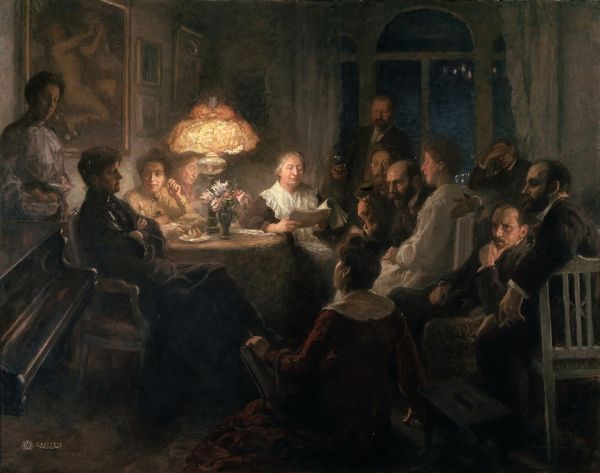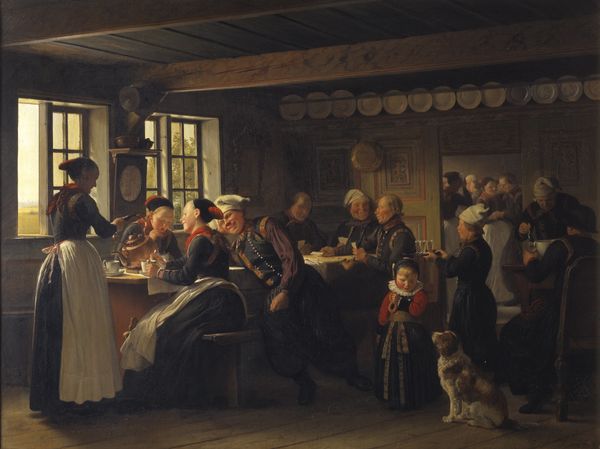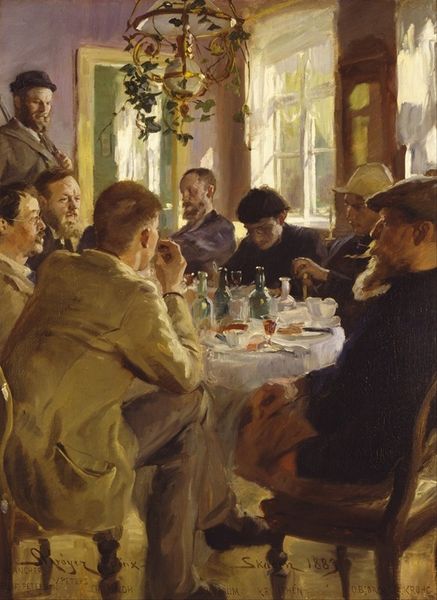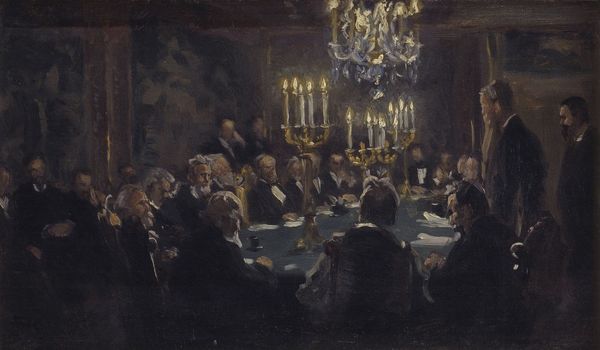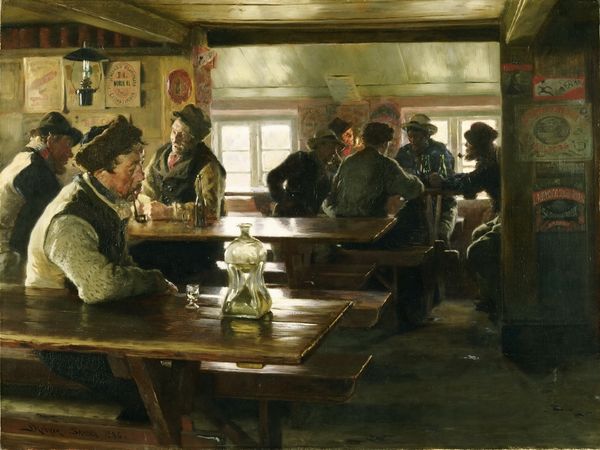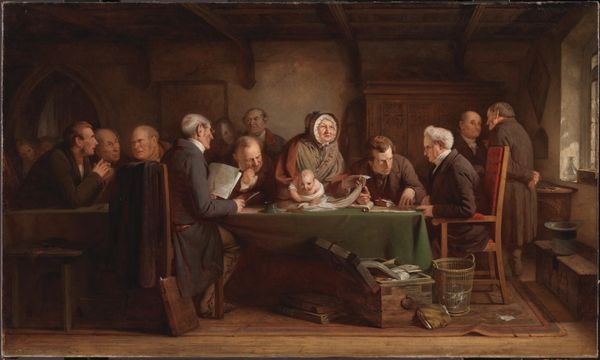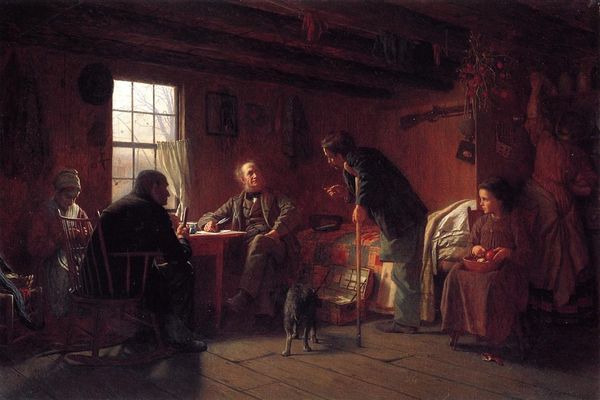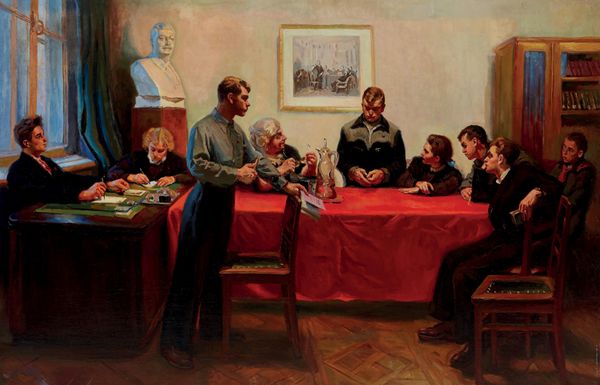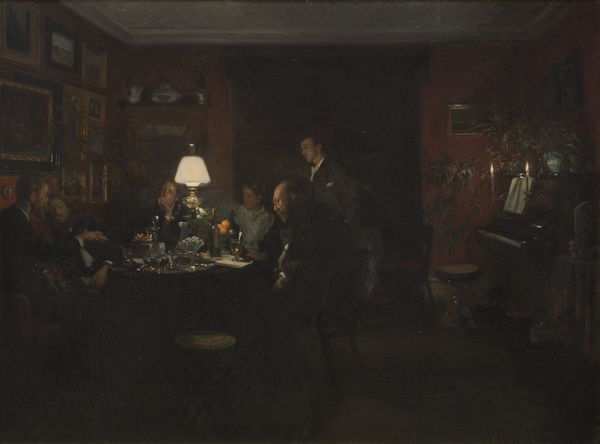
painting, oil-paint, canvas
#
portrait
#
narrative-art
#
painting
#
oil-paint
#
canvas
#
intimism
#
group-portraits
#
genre-painting
#
academic-art
Dimensions: 79 cm (height) x 102.5 cm (width) (Netto)
Curator: Let's take a look at "Middag efter bispevisitatsen," or "Dinner after the Bishop's Visit" by Carl Thomsen, an oil on canvas created in 1888. I'm drawn to the visible brushstrokes and how Thomsen captures light filtering through what appears to be a rather opulent dining setting. What's your immediate read on it? Editor: A moment suspended in time, wouldn’t you say? It’s formal but somehow still…tense. You can almost feel the societal expectations weighing on everyone at that table. There’s something performative about this social ritual. Curator: Indeed. Consider the meticulous layering of oil paint—each dab applied strategically to convey the textures of the clothing, the silverware, the walls themselves. Look at the material reality—linen, silver, glassware. One can consider this not only as a depiction of a dinner but also as a signifier of economic and social status in Denmark in the late 19th century. Editor: And it's not just about wealth; it’s about power, gender, and perhaps even the role of the Church at the time. Observe how everyone is positioned around the table in relation to the Bishop who just left, the women in their proper place. Curator: Note also the artist’s hand evident in the treatment of light and shadow—Thomsen uses this juxtaposition of light and shadow to delineate the interior. There's a visible concern for creating an authentic visual representation. He focuses on recording the specifics of form and texture, almost as if to authenticate this slice of reality. Editor: Absolutely. The very act of painting, immortalizing this moment, gives it a weight beyond just a casual gathering. And it raises questions about who is represented, who isn't, and what stories aren’t being told within these social structures. It makes one wonder how many people, by virtue of gender, race, and status were not seated around this table, so to speak. Curator: Well put. Studying the artwork through its formal components and material conditions helps us see how class and social relationships are expressed. Editor: Right, and contextualizing the work within the power structures of 19th century Denmark forces us to consider not just what is depicted, but who held the brush—who got to define "reality.” It pushes the narrative and encourages viewers to analyze their own perceptions in art historical representations. Curator: It seems every viewing unveils new aspects of the complex network of creation. Editor: And understanding the sociopolitical implications—illuminating that nexus of power and influence—helps connect the viewer to a more profound awareness of ourselves and our history.
Comments
No comments
Be the first to comment and join the conversation on the ultimate creative platform.
